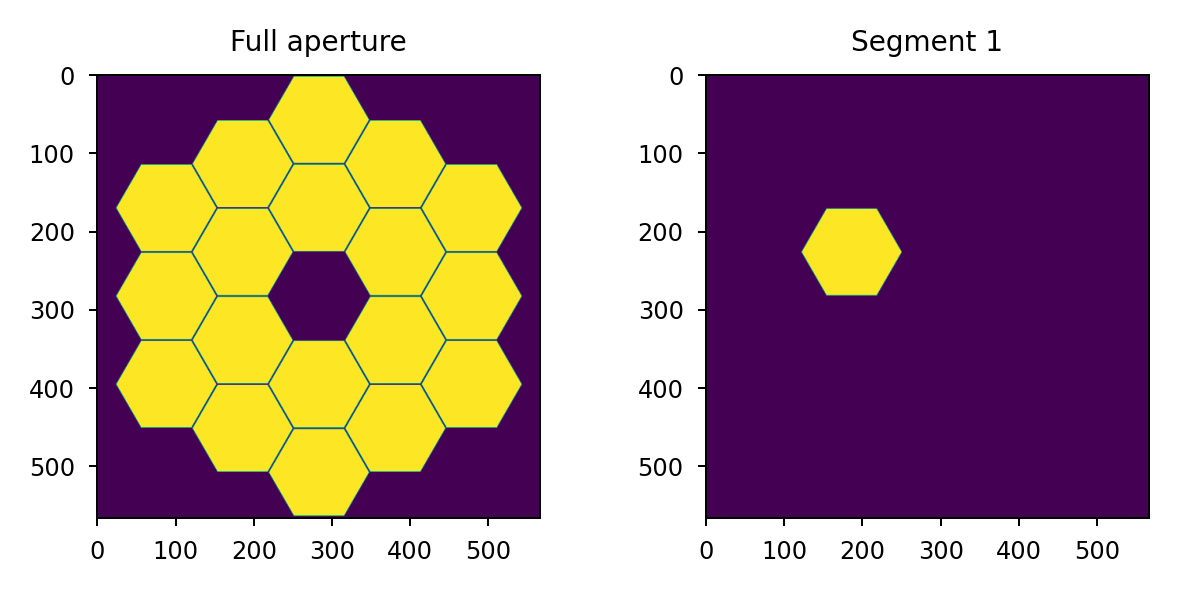lentil.hex_segments#
- lentil.hex_segments(rings, seg_radius, seg_gap, rotate=False, antialias=True, flatten=False, pad=2, drop=(0,))[source]#
Draw a segmented aperture made up of hexagonal segments
- Parameters:
rings (int) – Number of segment rings. Must be >= 1.
seg_radius (float) – Segment outscribing radius in pixels
seg_gap (float) – Spacing between adjacent segments in pixels
rotate (bool, optional) – Rotate segments so that flat sides are aligned with the Y direction instead of the default orientation which is aligned with the X direction.
antialias (bool, optional) – If True (default), the segment edges are antialiased.
flatten (bool, optional) – If True, the individual segment masks are flattened into a single global mask. Default is False.
pad (int, optional) – Number of additional pixels to zero-pad output by. Default is 2.
drop (list_like, optional) – Segments to exclude from output. 0 represents the central segment.
- Return type:
ndarray
Examples
>>> import matplotlib.pyplot as plt >>> import lentil >>> mask = lentil.hex_segments(rings=2, seg_radius=64, seg_gap=2) >>> fig, ax = plt.subplots(nrows=1, ncols=2, figsize=(5, 2)) >>> ax[0].imshow(np.sum(mask, axis=0)) >>> ax[0].set_title('Full aperture') >>> ax[1].imshow(mask[0]) >>> ax[1].set_title('Segment 1')

References
[1] Hexagonal Grids (https://www.redblobgames.com/grids/hexagons/)